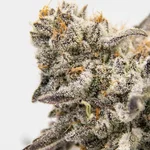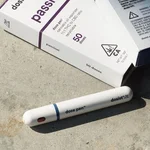Understanding Glaucoma
Glaucoma is a progressive eye disease that causes damage to the optic nerve, leading to vision loss or blindness. The disease is often caused by increased pressure in the eye, which can damage the optic nerve over time. There is no cure for glaucoma, but there are treatments available to slow the progression of the disease.
Conventional Treatments for Glaucoma
The primary goal of glaucoma treatment is to reduce intraocular pressure (IOP), which can slow the progression of the disease. Conventional treatments for glaucoma include eye drops, laser therapy, and surgery. Eye drops are the most common treatment and work to reduce IOP by increasing drainage of aqueous humor, a fluid that helps maintain eye pressure.
Medical Marijuana and Glaucoma
There has been growing interest in the use of medical marijuana as a potential treatment for glaucoma. Marijuana has been shown to decrease IOP by reducing the production of aqueous humor. However, the effects are short-lived, usually only lasting a few hours, and there are concerns about the long-term safety and efficacy of using marijuana to treat glaucoma.
The History of Medical Marijuana and Glaucoma
The use of medical marijuana to treat glaucoma dates back to the 1970s when researchers discovered that smoking marijuana could lower IOP. At the time, there were no effective treatments for glaucoma, and marijuana was seen as a potential solution. However, there was little research to support its use, and the psychoactive effects of marijuana made it difficult for patients to use regularly.
The Efficacy of Medical Marijuana for Glaucoma
While marijuana can lower IOP, its effects are short-lived and inconsistent. Patients would need to smoke marijuana every few hours to maintain the reduction in IOP, which is not practical, and the psychoactive effects can make it difficult for patients to function normally. Additionally, smoking marijuana can cause irritation to the eyes, which can exacerbate the symptoms of glaucoma.
The Safety of Medical Marijuana for Glaucoma
There are concerns about the long-term safety of using marijuana to treat glaucoma. Smoking marijuana can cause damage to the lungs, and the psychoactive effects can impair judgment and coordination. Additionally, the use of marijuana can interfere with other medications, which can lead to unwanted side effects.
Alternative Treatments for Glaucoma
While medical marijuana has shown some potential as a treatment for glaucoma, there are other treatments available that are more effective and safer. Eye drops, laser therapy, and surgery are all effective at reducing IOP and slowing the progression of the disease. Additionally, there are lifestyle changes that patients can make, such as maintaining a healthy weight and exercising regularly, that can help to reduce IOP.
Eye Drops
Eye drops are the most common treatment for glaucoma and work to reduce IOP by increasing drainage of aqueous humor. There are several types of eye drops available, including prostaglandin analogs, beta blockers, alpha agonists, and carbonic anhydrase inhibitors. Eye drops are typically administered once or twice a day and are effective at reducing IOP.
Laser Therapy
Laser therapy is a non-invasive treatment that uses a laser to reduce IOP by increasing drainage of aqueous humor. There are several types of laser therapy available, including argon laser trabeculoplasty (ALT) and selective laser trabeculoplasty (SLT). Laser therapy is typically performed in an outpatient setting and is effective at reducing IOP.
Surgery
Surgery is a more invasive treatment for glaucoma and is typically reserved for patients who have not responded to other treatments. There are several types of glaucoma surgery available, including trabeculectomy, tube shunt surgery, and minimally invasive glaucoma surgery (MIGS). Surgery is effective at reducing IOP, but it carries more risks than other treatments.
Conclusion
While medical marijuana has shown some potential as a treatment for glaucoma, there are other treatments available that are more effective and safer. Eye drops, laser therapy, and surgery are all effective at reducing IOP and slowing the progression of the disease. Additionally, there are lifestyle changes that patients can make, such as maintaining a healthy weight and exercising regularly, that can help to reduce IOP. Patients with glaucoma should work closely with their healthcare provider to develop a treatment plan that works best for them.












